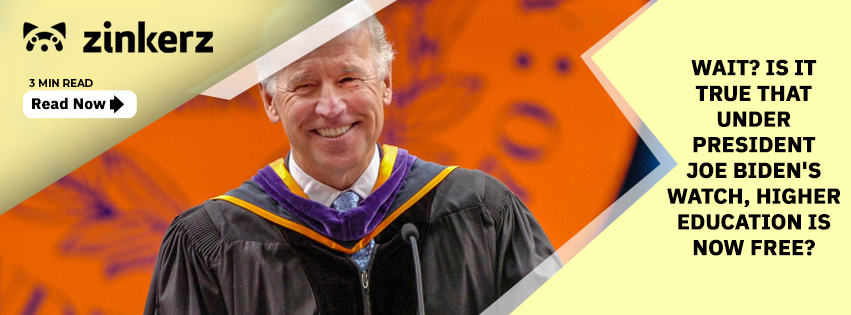Last December, New York Knicks fans swept the TikTok world, hurling their bodies at the nearest phone camera to holler their new catchphrase: “Bing bong!” Many New Yorkers turned to “man on the street” style videos, initially popularized by Billy Eichner and Jimmy Kimmel, to interview their fellow Knicks fans, hoping to elicit the newfound moniker. As we can all imagine, holding a camera in public can attract derelicts and the likes of those who would not usually be invited to propagate their opinions over the internet. Thankfully, New York-based rapper NEMS visited Coney Island to interview people on the boardwalk and met a man known simply as “TJ.” While filming clips of Knicks fans yelling “bing bong,” NEMS found TJ and asked, “Who’s the president?” to which TJ answered, “ByRON!” It’s unclear whether this was an incorrect answer or simply a mispronunciation, but before long, this new meme was sweeping the internet.
After gaining even more fame by asking the president to invite him out to dinner, TJ went incredibly viral on TikTok, with popular creators and celebrities, from John Legend to the Jonas Brothers, making their videos using TJ’s sound. President Biden even appeared at the end of the Jonas Brothers’ video, posing as the videographer. Why am I talking about a TikTok trend from nine months ago? One reason is nostalgia; it’s nice to remember where we’ve been and where we can go. Second, a significant platform of the Biden administration, and the Democratic Party in the United States as a whole, has been to infiltrate the youth vote to gain power. Remember Maya Rudolph’s impersonations on SNL of Kamala Harris being a repetitive mouthpiece for memes? So, having TJ popularize “Joe Byron” on the most popular form of social media for youths, and Joe Biden’s willingness to take part in the trend, must have worked wonders for the administration’s apparent popularity. According to an article by JC Peterson at the University of Chicago, the younger demographic is more liberal than older generations, so the White House’s strategy has been to get kids to get out and vote, as they believe they are already in good standing with 18–35-year-olds.
Recently, a popular topic of discussion, especially within this demographic, has been student loan debt after graduation. Millennial and Gen Z students have been increasingly vocal about their future financial concerns. With the United States’ current student debt topping $1.6 trillion, many are worried about their prospects of owning their own home or being able to put their kids through college while under such massive debt. Meanwhile, Gen X and Baby Boomers insist it is possible to overcome the deficit while remaining financially comfortable, pointing to their experiences of graduating college and actively owning homes as evidence. Comedian Alex Edelman performs a joke in his act, imitating baby boomers saying, “When I bought [my house] in 1981, I paid eleven raspberries for it”—emphasizing the disparity between current and past costs of goods. These are both generalizations, and there are sure to be exceptions to these ideas, but this blog is not about the differing ideologies between age groups surrounding student loan forgiveness. This blog is about President Biden’s fulfilling a campaign promise to follow through with student loan forgiveness for the appeasement of the younger crowd.
We here at Zinkerz don’t care if this action bothered you or prompted you to plan a parade through your city. We are here to ponder the question:
Did Biden make college free?
Money is a necessary evil. It’s going to cost money if you want a Gatorade after a workout, to take the train instead of walking to work, or to get a pet dog. However, this will inspire greed and cutthroat competition — much to the delight of Adam Smith. Workers want to go where they can be paid more. If McDonald’s offered you $10,000 per hour, you wouldn’t even change out of your pajamas to run down there and apply. (Side note: Shanghai’s Hamburger University, a college where McDonald’s employees can gain a degree to rise in management, boasts a 1% acceptance rate, 1/7th that of Harvard’s, so maybe they should pay employees $10,000 per hour). And customers want to shop where things cost less. If your child needs new soccer cleats, you’ll probably look at Dick’s Sporting Goods’ website before Gucci’s. Northern European countries such as Norway, Sweden, Germany, and Denmark have instituted free college policies to attract international students and increase the percentage of their population familiar with higher education.
In the past, it hasn’t been smart to follow the policies of German politicians, but would it be smart for Biden to do so now? That seems like a far too complicated question to be answered by a 24-year-old blogger. Whether it was smart, did Biden already do it? Did he make college free? The US Department of Education has outlined Biden’s relief plan. It includes loan forgiveness of up to $20,000. So, if you took out federal loans totaling less than $20,000 to attend college, those are now non-existent. For context, the yearly tuition at the University of Southern California is $60,000. At Harvard, it is $54,000. For in-state students at Michigan State, tuition is $14,000, while out-of-staters pay $40,000. Scottish students pay $2000 a year to attend the University of St. Andrews in Fife, while students from England, Wales, and Northern Ireland pay $10,000 per year, and international students pay $23,000 per year. So, depending on the school, this could have made college free. But, for most Americans, it most likely acts as a modest discount on the tuition and the loans required to pay it.
If you don’t want to click the link, that’s okay. We read the report and can summarize it here. Biden’s plan was completed using three tactics:
- First, they have paused student debt payments until January 2023. So, as of this writing, no debts need to be paid off for three months.
- Second, it targeted student debt forgiveness at household income. Up to $20,000 will be forgiven for Pell Grant (federal loan) recipients, while those who did not receive this grant will receive up to $10,000 in forgiveness IF their household income is up to or under $125,000 for individuals and $250,000 for married couples. Here, the words “up to” mean that if the debt totals less than these values, then recipients will not be receiving “extra money.” If the debt is “only” $7,000, then $7,000 will be relieved.
- Third, the payment requirement structure for current and future students is being restructured. Currently, up to 10% of an individual’s monthly income can be spent on student loans. With Biden’s plan, that percentage will be capped at five. Another aspect is that those who make less than 225% of the federal poverty level (about $15 per hour over an annual income) will not have to make monthly payments. They will pay when they can and not be forced to comply with a schedule. The current promise is that, after 20 years, loan balances of $12,000 or less will be forgiven. Biden’s plan will change this timeline to 10 years instead.
All I have written has worked towards this answer: no, Biden did not make college free. Whether he should is up to you and the angry voice in your head to argue about. But, Biden has made college more accessible to those who relate more to Joey Tribbiani than Jeff Bezos.
In conclusion, we at Zinkerz would like to remind the reader that the earlier you can begin saving, the more secure you will feel in the future. To better understand the plan and the actions that ensure your future child will attend Musk University on Mars, you can sign up to take AP Economics courses with us and become an expert in the financial markets. One last note: BING BONG!



